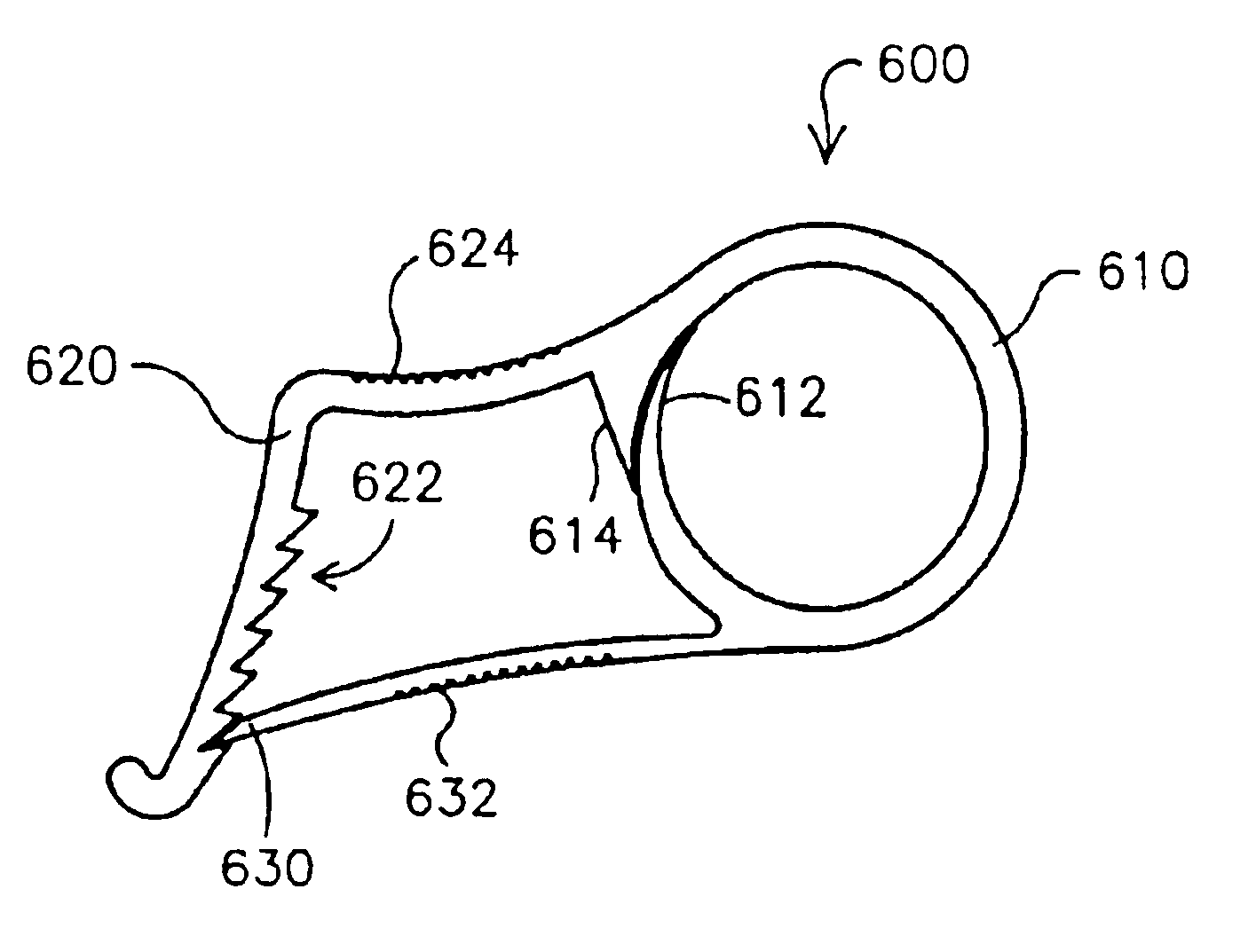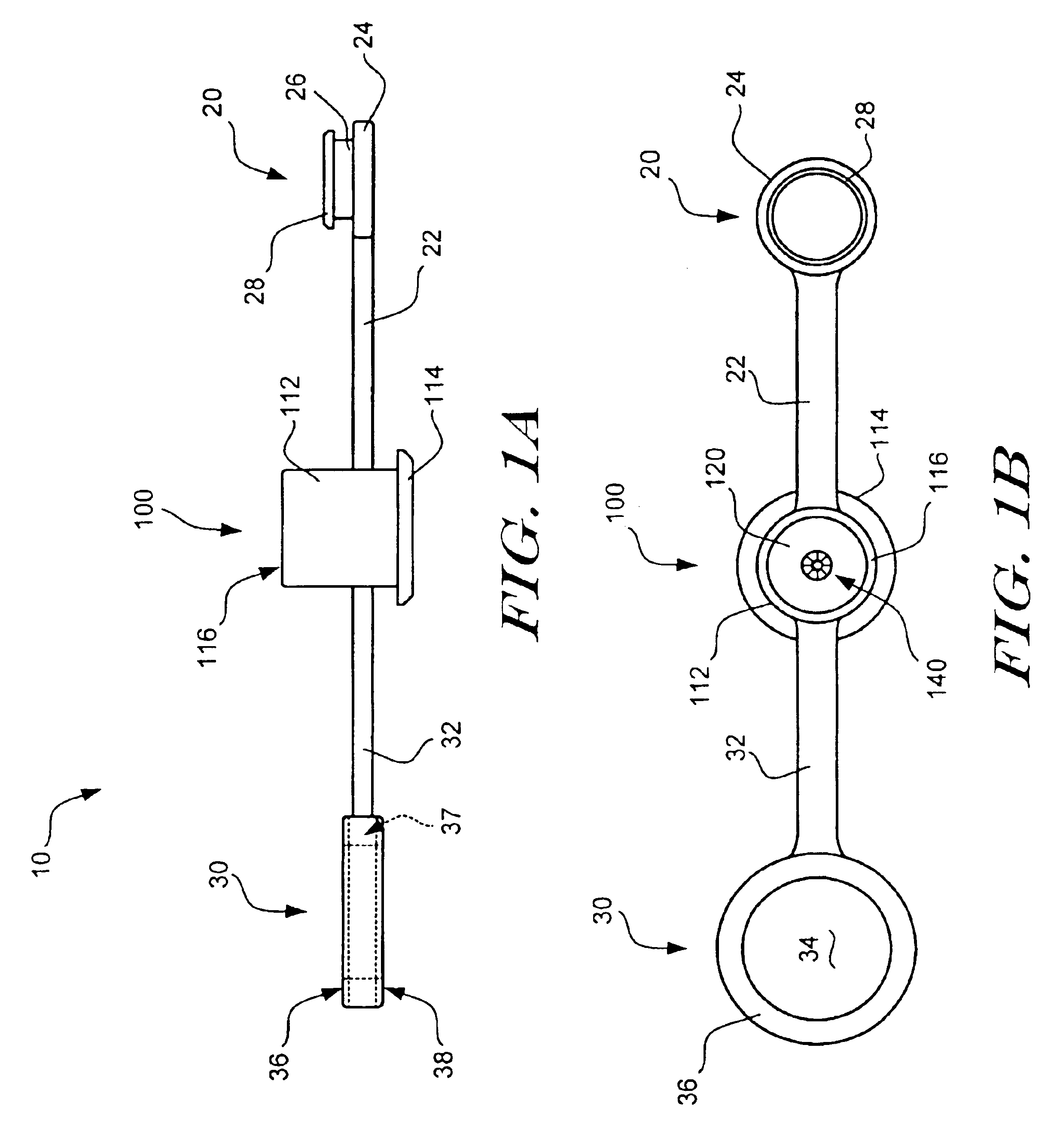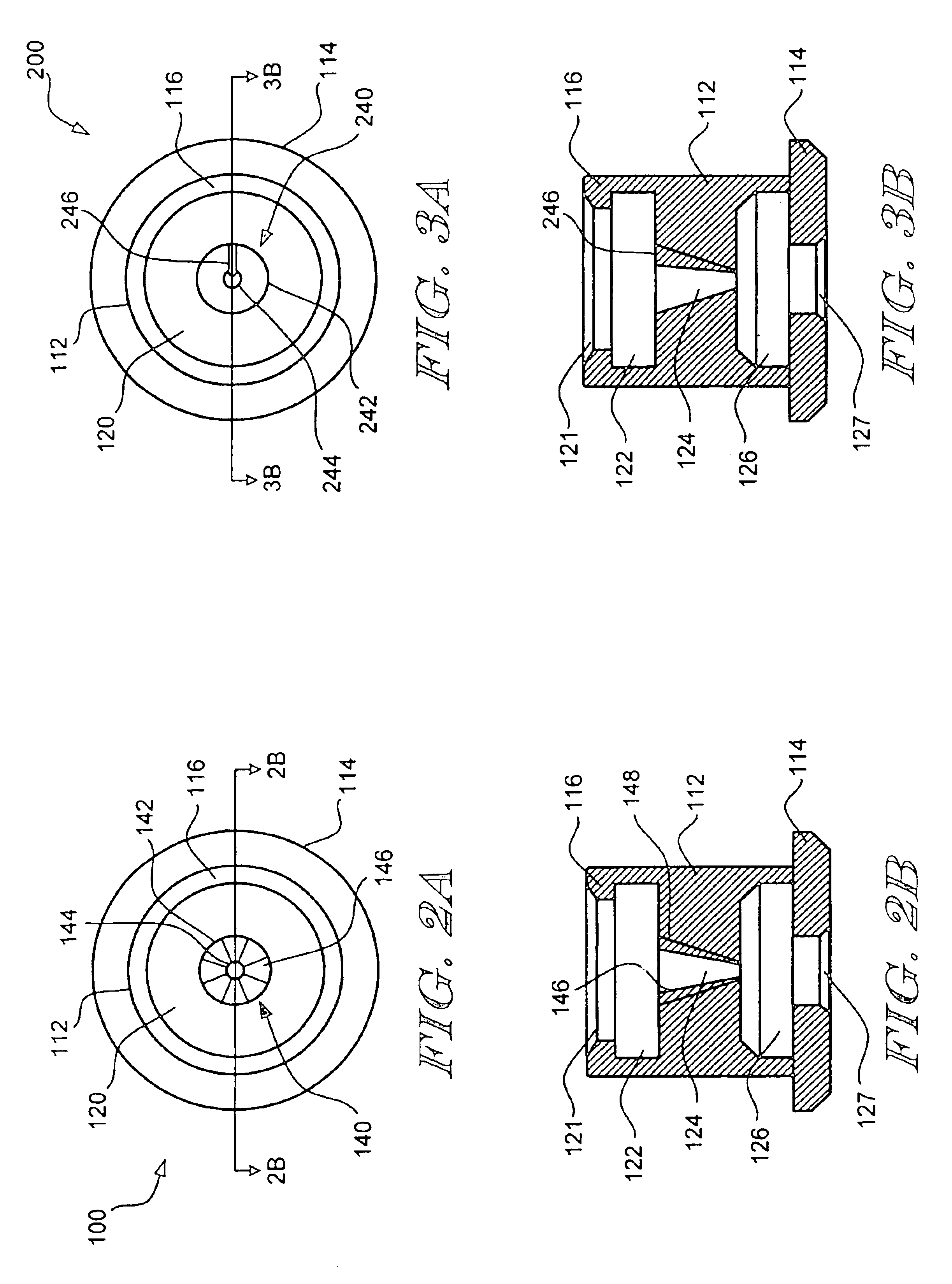Fluid seal for endoscope
a technology of endoscopy and fluid seal, which is applied in the field of endoscopy systems and procedures, can solve the problems of fluid (bile liquid and air) leakage, inability or relative difficulty to effectively seal around the non-circular shaft, and ineffective sealing of catheters having non-circular shafts. it can effectively inhibit the egress of fluid, effectively inhibit the effect of egress
- Summary
- Abstract
- Description
- Claims
- Application Information
AI Technical Summary
Benefits of technology
Problems solved by technology
Method used
Image
Examples
Embodiment Construction
The following detailed description should be read with reference to the drawings in which similar elements and different drawings are numbered the same. The drawings, which are not necessarily to scale, depict illustrative embodiments and are not intended to limit the scope of the invention.
Refer now to FIG. 1A which illustrates a side view of an endoscope seal in accordance with the present invention. Endoscope seal 10 includes a main body portion 100, a plus portion 20 and an adapter ring portion 30. The details of main body portion 100 are discussed in more detail with reference to FIGS. 2A and 2B. Main body portions 200, 300, 400, and 500 as discussed in detail with reference FIGS. 3A-3B, FIGS. 4A-4B, FIGS. 5A-5B, and FIG. 6D, respectively, may be used in place of main body portion 100.
Main body portion 100 includes a body 112 having a proximal end and a distal end. An outwardly extending flange 114 is connected to the distal end of the body 112. An inwardly extending flange 116...
PUM
 Login to View More
Login to View More Abstract
Description
Claims
Application Information
 Login to View More
Login to View More - R&D
- Intellectual Property
- Life Sciences
- Materials
- Tech Scout
- Unparalleled Data Quality
- Higher Quality Content
- 60% Fewer Hallucinations
Browse by: Latest US Patents, China's latest patents, Technical Efficacy Thesaurus, Application Domain, Technology Topic, Popular Technical Reports.
© 2025 PatSnap. All rights reserved.Legal|Privacy policy|Modern Slavery Act Transparency Statement|Sitemap|About US| Contact US: help@patsnap.com



